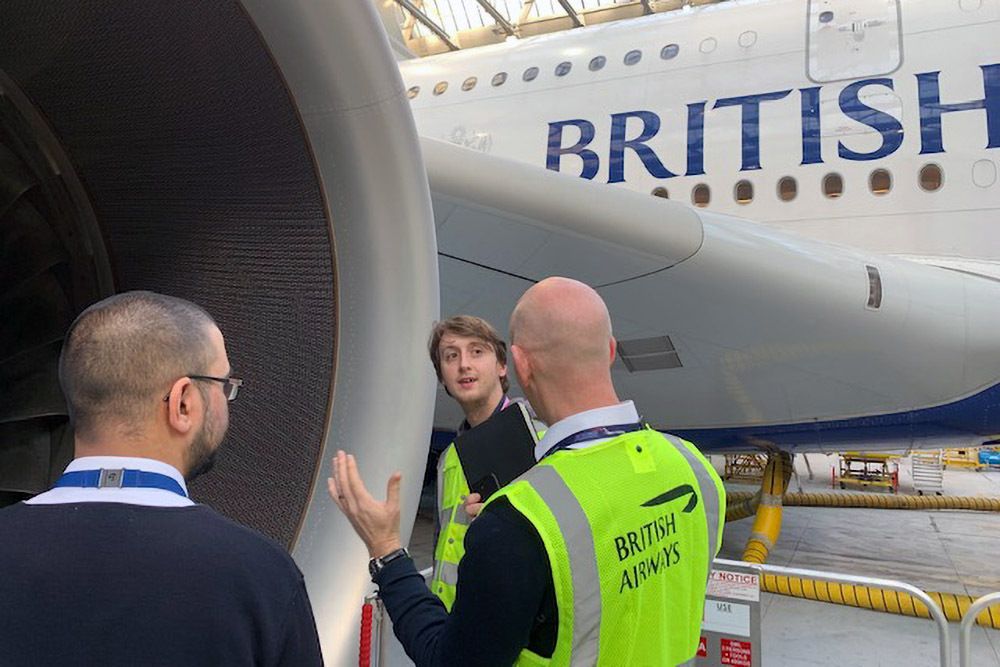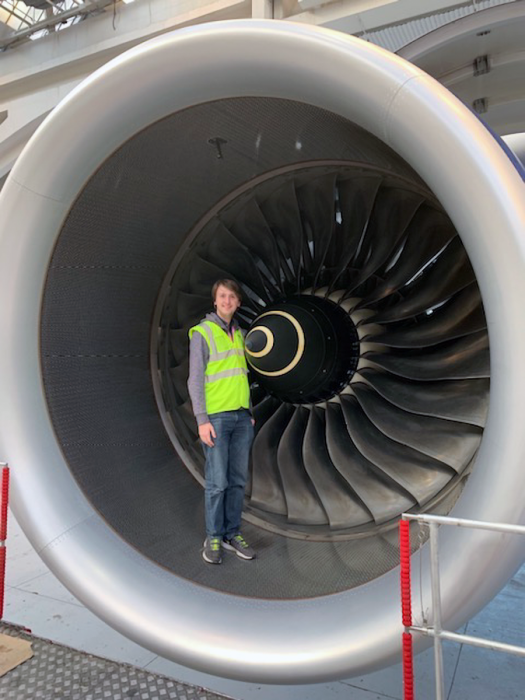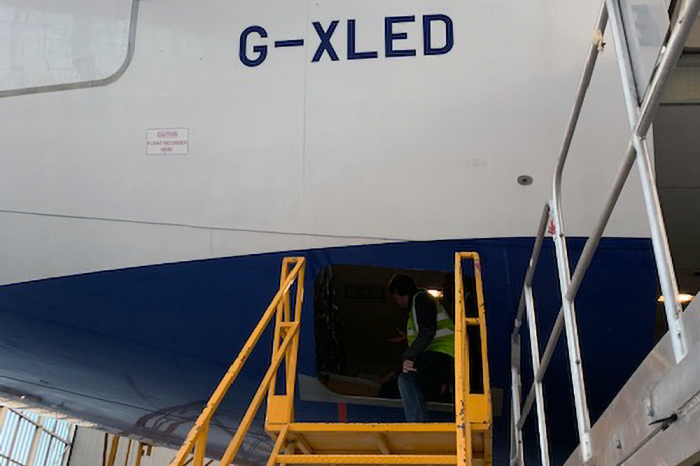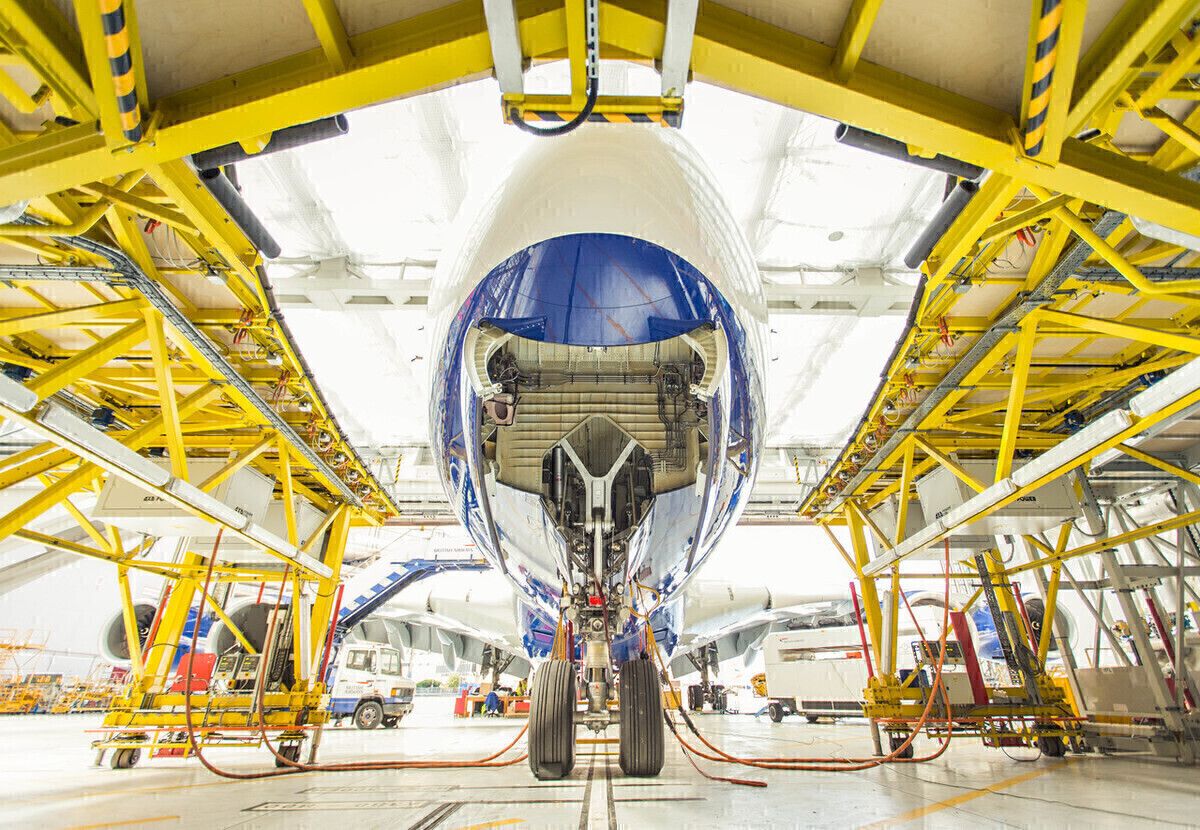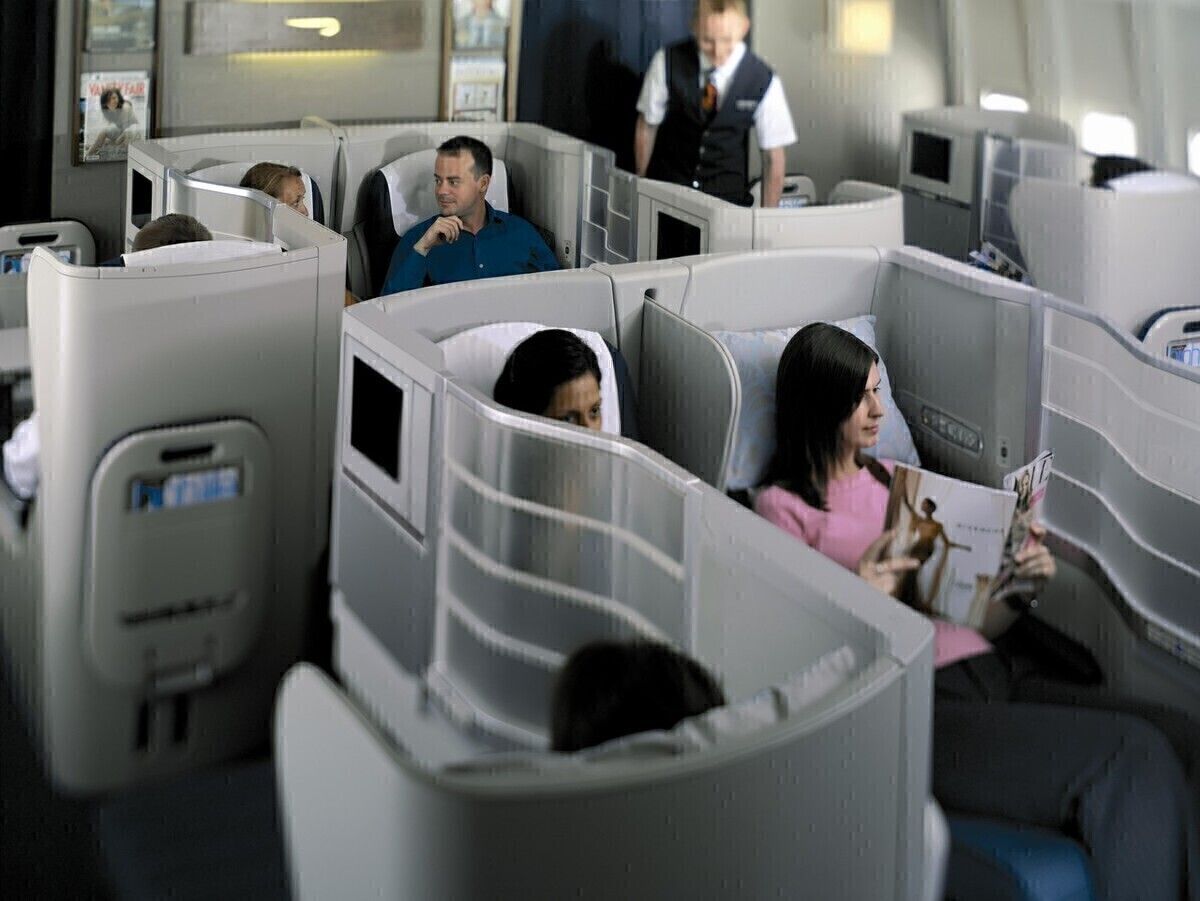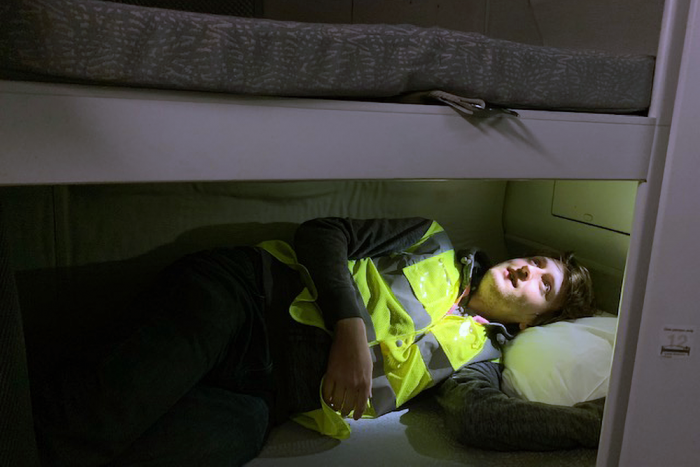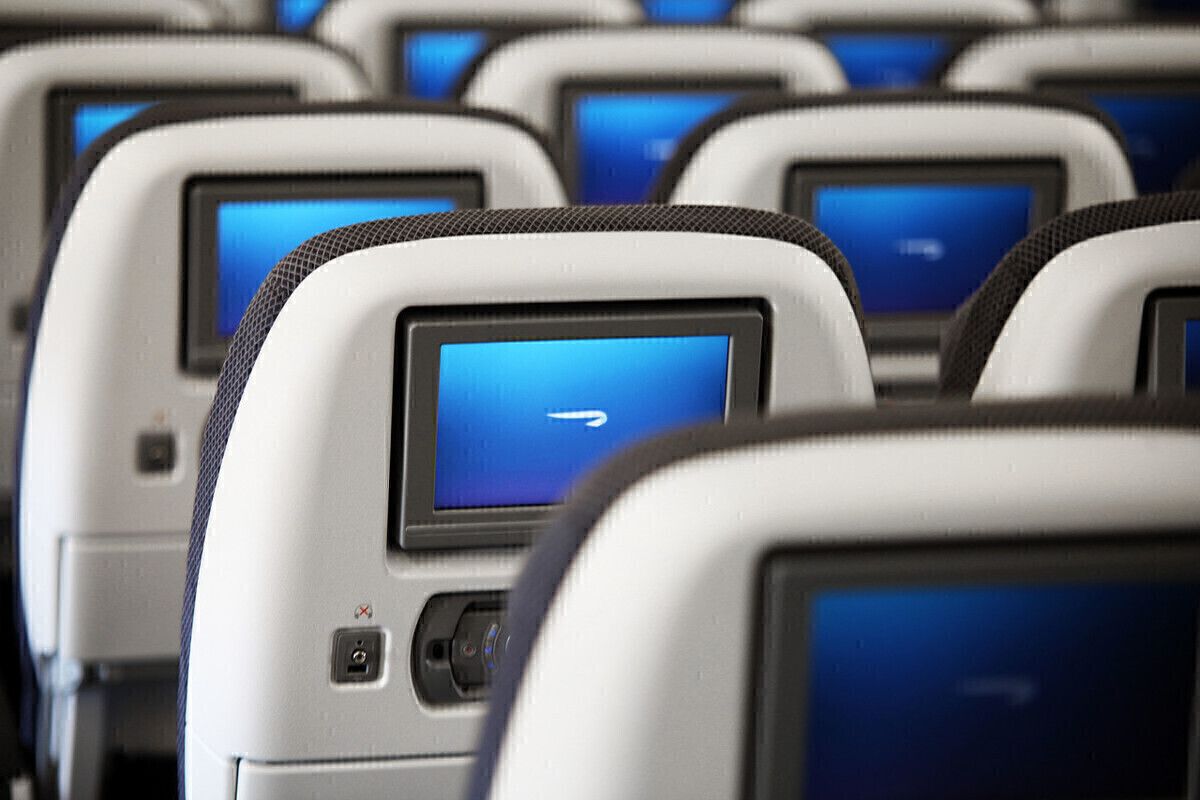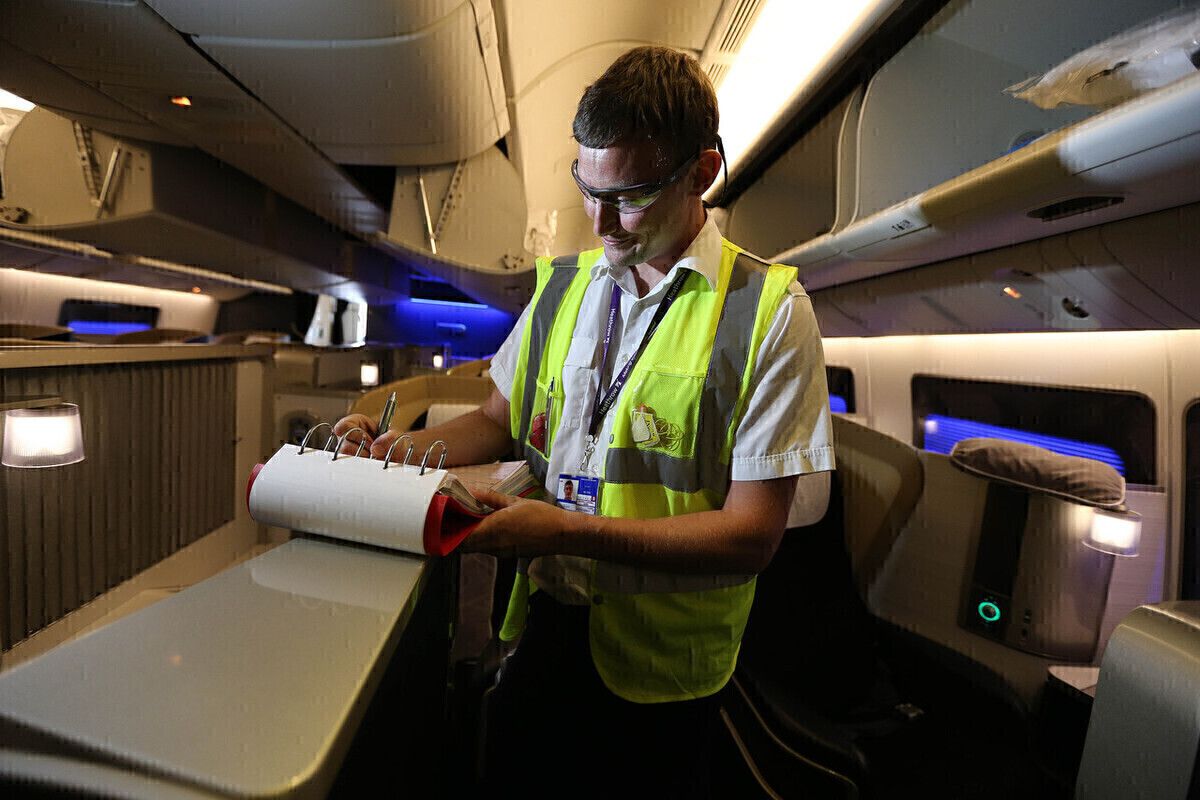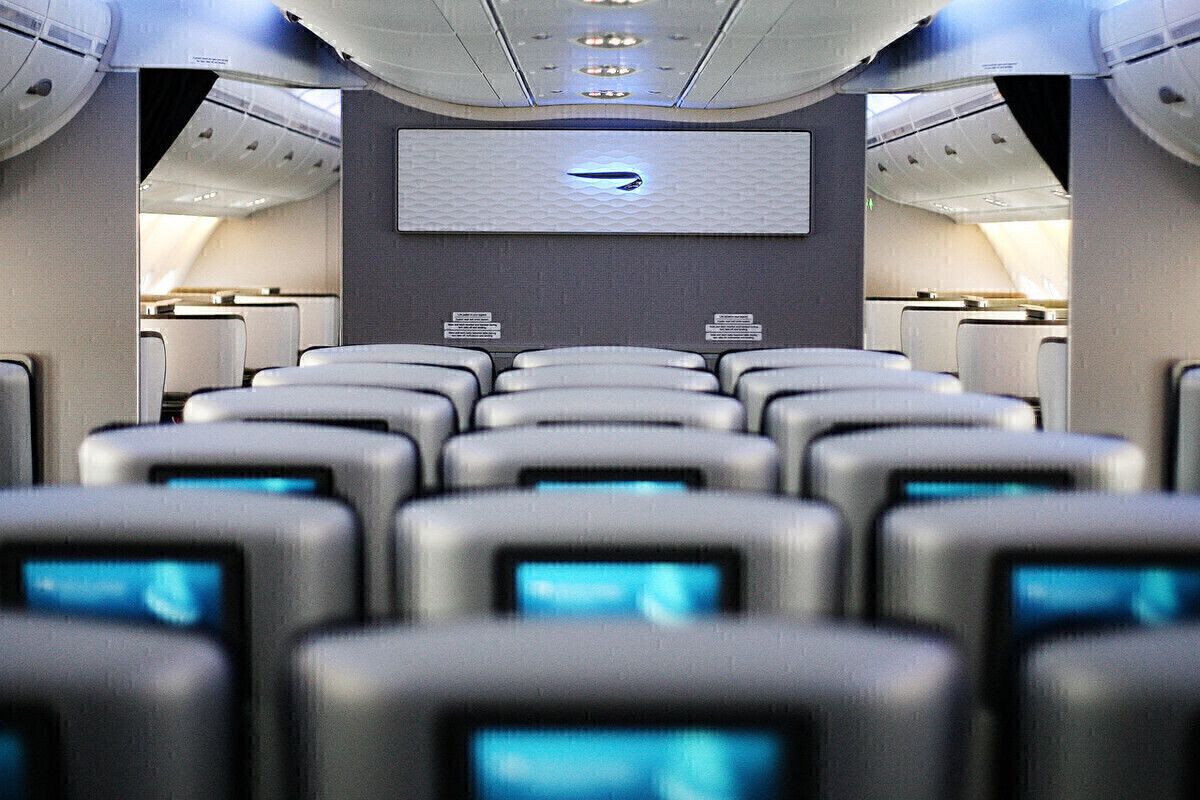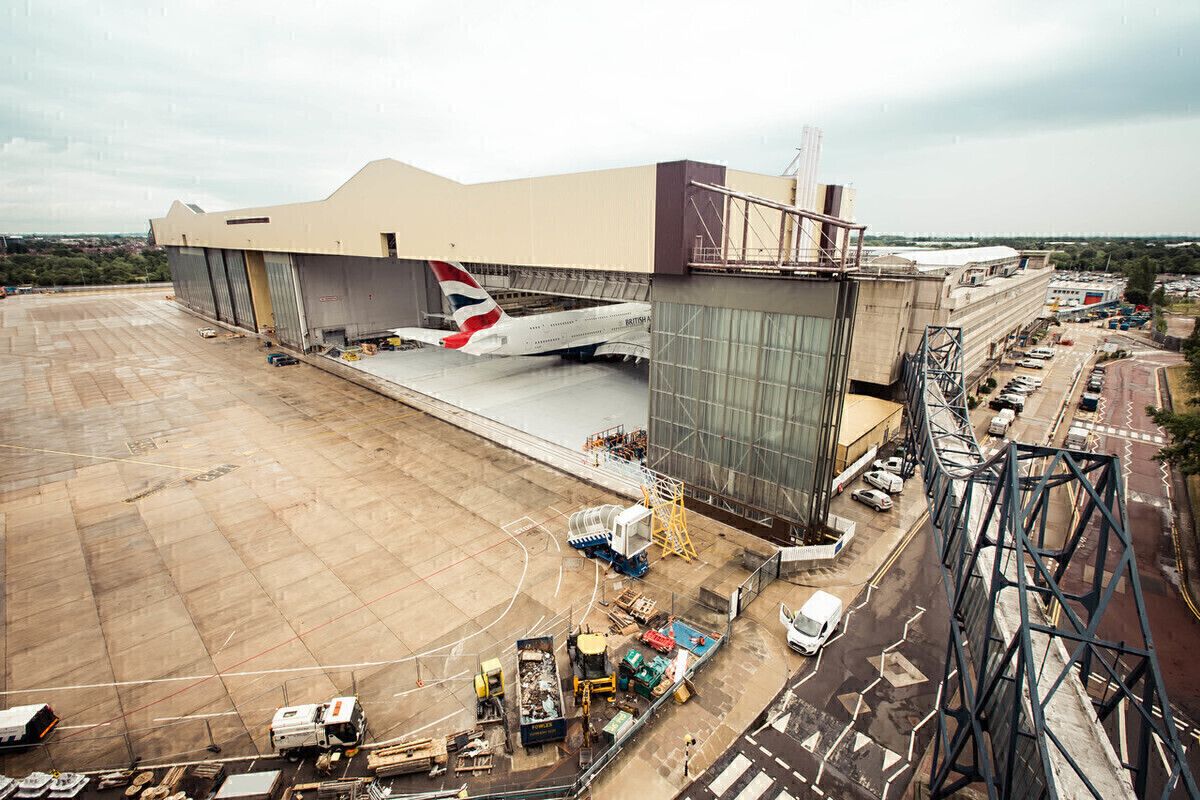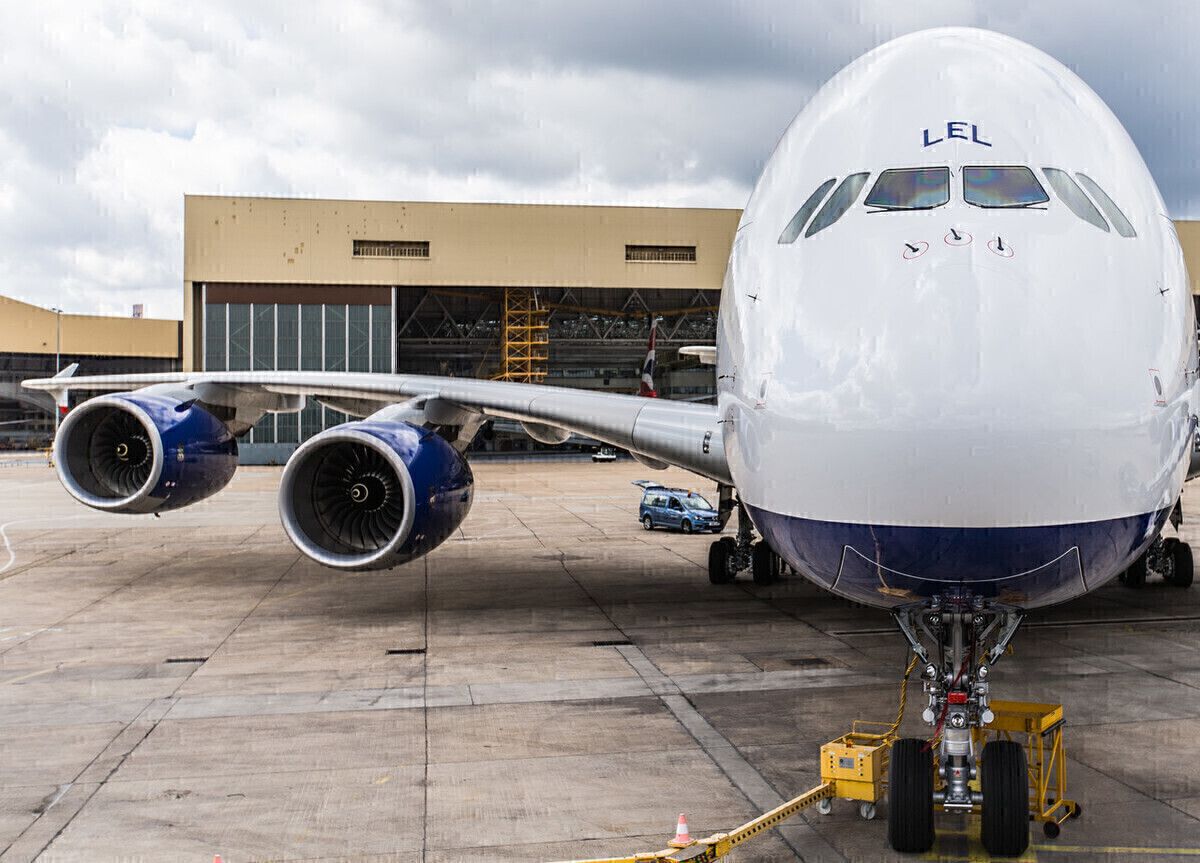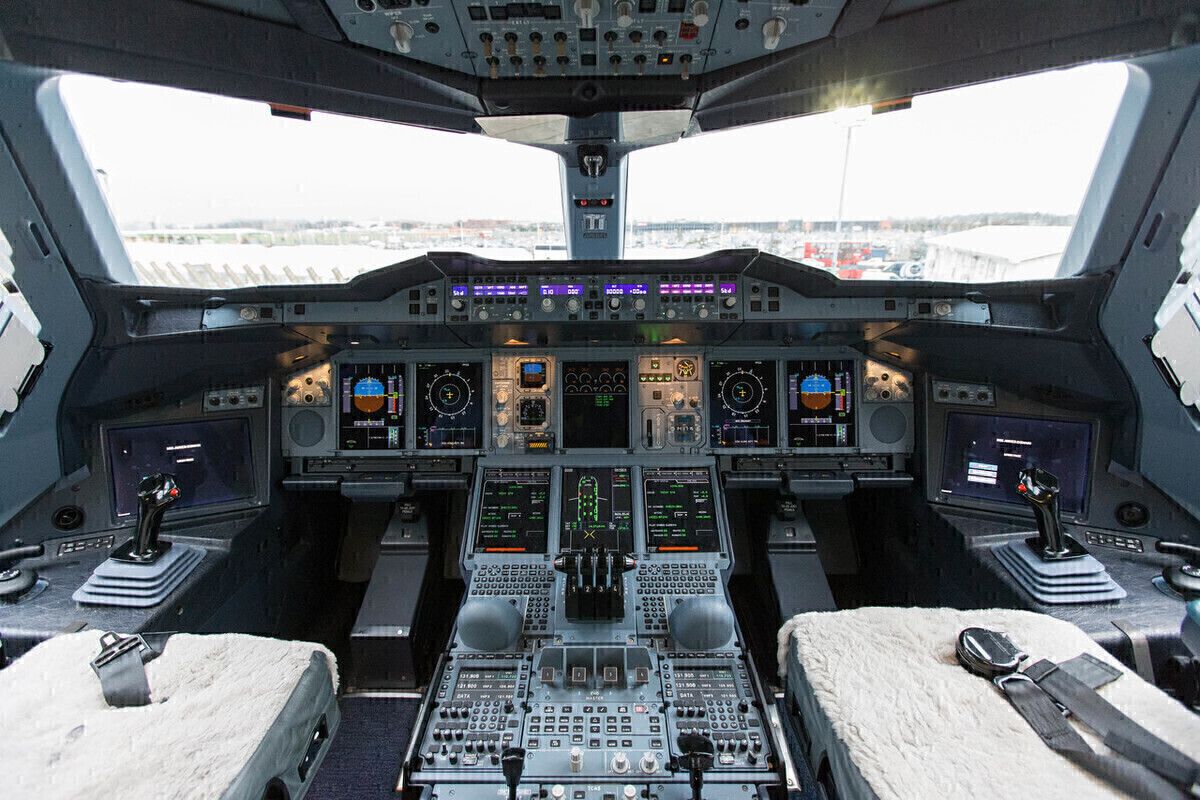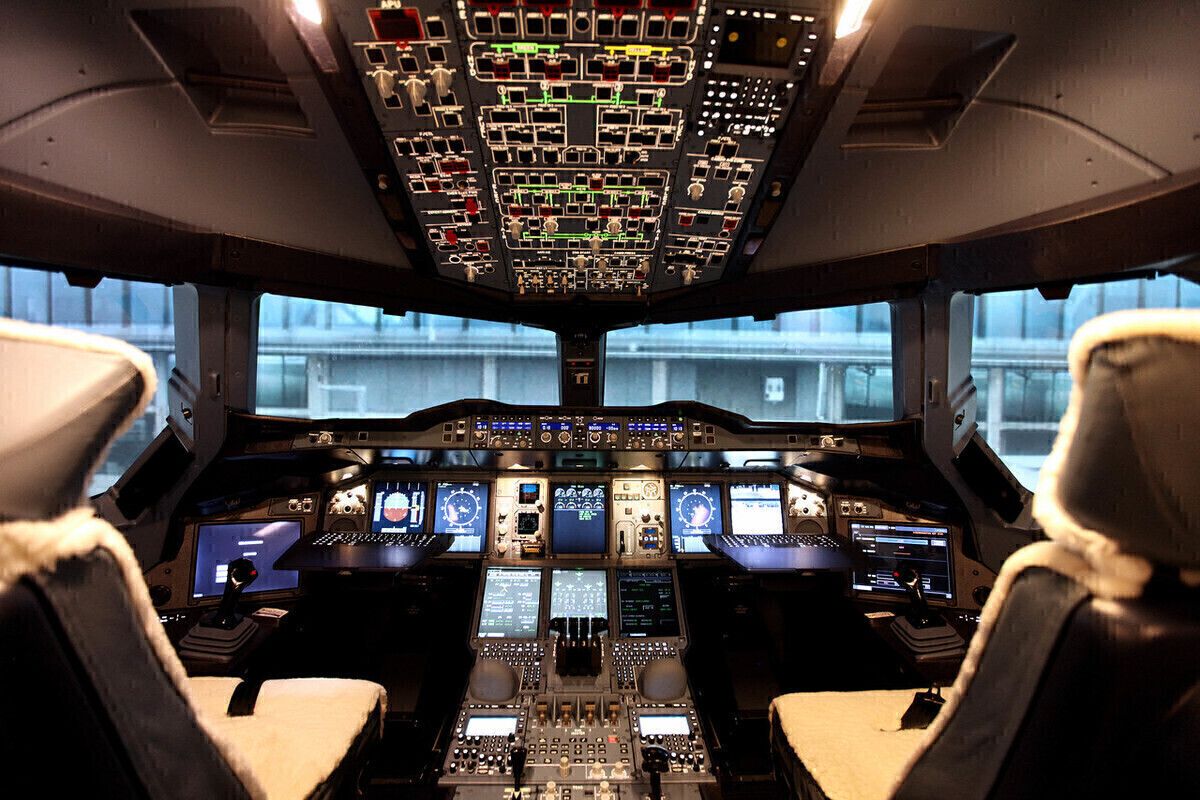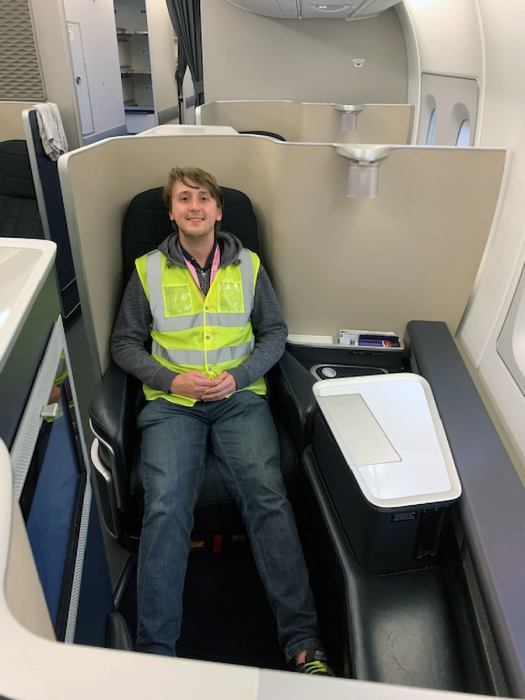Yesterday, British Airways sent its Airbus A380, G-XLEF, to London Heathrow to undergo routine maintenance. But just what maintenance does an Airbus A380 undergo at the London Heathrow British Airways hangar? In December 2019, British Airways invited Simple Flying to take a look.
I’ve flown on G-XLED before. However, it’s not until you stand next to the aircraft that you appreciate its immense size. The largest passenger aircraft in the skies takes up almost all of the hangar space available when in for maintenance.
Heeran Jethwa, a British Airways Engineering Licensed Aircraft Engineer, guided us around the aircraft joined by Phil Baxendale, the Engineering Head of Quality and Technical at British Airways. He explained that the aircraft was in for a regular checkup to ensure everything is in top shape. He adds that when an A380 is in the hangar, it really is all hands on deck.
With a fleet of just 12 aircraft, the airline would typically struggle to substitute the A380 if maintenance overruns. With the retirement of the airline's 747s, its largest plane is now the 777. If one of these were replaced onto a canceled A380 flight, many passengers would still face being bumped as a result. Of course, with the airline's fleet currently grounded, this is not a concern right now.
Stay informed: Sign up for our daily aviation news digest.
Starting outside
Following a brief chat about safety, we headed into the hangar. The immense size of the aircraft really makes an impression. First up, we went for a walk underneath the wing. The aircraft’s number four engine had its cowling open. This was accompanied by scaffolding which allowed us to get right inside the engine. It was surprising how small the interior of the aircraft's engines actually is.
While the British Airways Airbus A380 only has Rolls-Royce Engines, not each one is created equally. Only the number two and number three engines are equipped with reverse thrust. The aircraft also only uses these two engines to taxi to the runway.
We then worked across to the number three engine, which had its cowling closed. However, it had a platform prepared to inspect the engine's fan blades. Stepping up onto this, I was once more blown away by the size of the engine's components. I was invited to step inside the engine, and despite being six feet and three inches tall, there was more than enough space to stand up.
A first peek inside
The first peek inside the aircraft took us into the A380’s cargo deck. This is a place where few of the airline's passengers can say they’ve been. Given the aircraft's vast size, I was surprised that it wasn't possible to stand up straight inside the cargo hold, something passengers can do with ease in the main cabin.
We climbed in through the bulk item door at the rear of the aircraft. Unlike the big cargo containers that go in the central part of the belly, this part holds smaller things such as a last-minute checked bag or pets, which need to be easily accessible on the ground. Interestingly, the cargo hold is split into two, so we had to leave the same way we arrived.
Around the other side of the aircraft, we found even more scaffolding. This had been placed to replace a component only accessible from the top of the engine. We carefully climbed the structure to the top, and I was greeted with yet another magnificent sight. You can't truly appreciate the sheer scale of the Airbus A380 wing until you stand towards the end to admire it (see the first image in this article).
Into the cabin
Having descended the scaffolding carefully placed to reach the top of engine number one, we walked underneath the giant aircraft to some more scaffolding. This took us up to the second starboard entry on the aircraft's main deck. It proved to be an exciting moment for me, as it was the first time I had boarded a commercial jet from the right-hand side.
On most A380s, this would put you in the middle of the economy cabin. However, British Airways has opted to put its first-class cabin on the main deck of the Airbus A380. We turned left and started our journey through the lower part of the Club World cabin. Here, a team of engineers was hard at work checking and replacing everything from IFE screens to the galley's decor. The lower floor also houses an economy cabin at the rear and the First cabin at the front.
No detail has been left unchecked in the cabin. This includes the crew rest area, which is hidden away. We entered the area, and I was surprised by how much space was available. On previous visits to British Airways, I had seen in the A350's crew rest area. Reminiscent of a hostel, the area has a bunk bed for each member of the crew.
Up the spiral staircase
At the rear of every Airbus A380 is a staircase connecting the two passenger decks. After climbing over a dedicated worker fixing something on the floor, we had time to admire the upper economy cabin. Unlike the 3-4-3 layout on the main deck, the upper cabin is laid out with a 2-4-2 configuration. This makes it slightly more pleasant when traveling, and as such, it is my cabin of choice on the British giant of the skies.
Ahead of the small economy cabin is British Airways' premium economy cabin, called World Traveller Plus. The cabin is a slight upgrade from the upper economy cabin with a 2-3-2 layout. However, the real upgrade comes from the enhanced soft product in this class. At this point, Heeran points out one exciting element of the Airbus A380. The aircraft actually has two elevators that can move standard-sized galley containers between the floors.
Moving forwards
Moving forward once more, we reach the Club World cabin, otherwise known as business class. British Airways is currently rolling out a new Club Suite cabin on a number of its aircraft.
For the time being, the A380s have the old Club World cabin. The Airbus A380 is set to be the last aircraft to receive the new Club Suite cabin, with 2023-2025 targetted before the type was grounded. As a result, they are currently stuck with a 2-4-2 layout on the lower deck. This is 2-3-2 on the upper deck, matching the premium economy layout.
At the front of the cabin are two enormous toilets. These are the reason that most carriers put the first-class cabin on the upper deck. On Emirates' A380s, these toilets double up as shower cubicles.
Back downstairs
At the front of the cabin is a staircase leading down to the main deck at the front door. We descended this and headed into the cockpit. The Airbus A380's cockpit is a very private space for pilots. Locked off from the rest of the cabin, they have their own toilet, as well as two private rooms containing beds and armchairs.
Passing these rooms, we got the chance to sit down in the surprisingly cozy cockpit. Heeran takes the time to give me a quick tour around the cockpit, mindful that engineers are working around me. The main difference between the Airbus A380 and the Boeing 787 simulator I had flown earlier in the day is the control input. While the Boeing aircraft had a traditional yoke, the A380 has a sidestick.
The aircraft also has many different screens. In fact, I'm straight back into the engineering aspect of things when we take a look at the digital circuit breaker system. The aircraft has some traditional circuit breakers hidden away outside the main cabin. However, it also has a digital system for circuit breakers.
How the circuit breakers work
Say that somebody needs to work on the aileron and doesn't want it to move in the process. They can pull the circuit breaker and tag it with their name. Every user will see that it has been tagged, and it stays put until it is removed by the person who set it.
However, multiple people can tag the same item. That way, if one person removes their tag, the breaker remains pulled until work is complete. It also gives a comprehensive overview of any tags that are still pulled when maintenance has been completed.
The other thing that strikes me in the cockpit is how many levers and switches are covered. This is to stop anything significant from being accidentally triggered. It is much harder to claim that you accidentally raised the gear, for instance, if there is a multiple-step cage covering the lever.
Back into First
Our time with the Airbus A380 is now coming to a close, leaving just enough time to explore the First cabin. Phil explains to me that on the Airbus A380, the cabin is slightly modified to take advantage of the aircraft's additional width. While somebody takes apart a seat next to me, I settle into seat 4A for what may be my only experience of the current British Airways first class seat.
While I am relaxing, Phil explains the rest of the Britsh Airways maintenance program to me. The airline uses a couple of bases away from Heathrow for more in-depth maintenance. The main one is in Cardiff, which deals with heavy-duty jobs such as replacing the Boeing 777's cabin.
As a closing thought, he mentions that he is proud of how his team is responsible for more than just maintenance. He shares that his input was even sought on how the current cabin should be designed. After all, as the Engineering Head of Quality and Technical, he knows the airline's A380 aircraft inside out!
Have you been fortunate enough to fly onboard British Airways' Airbus A380? Let us know how you found it in the comments!


